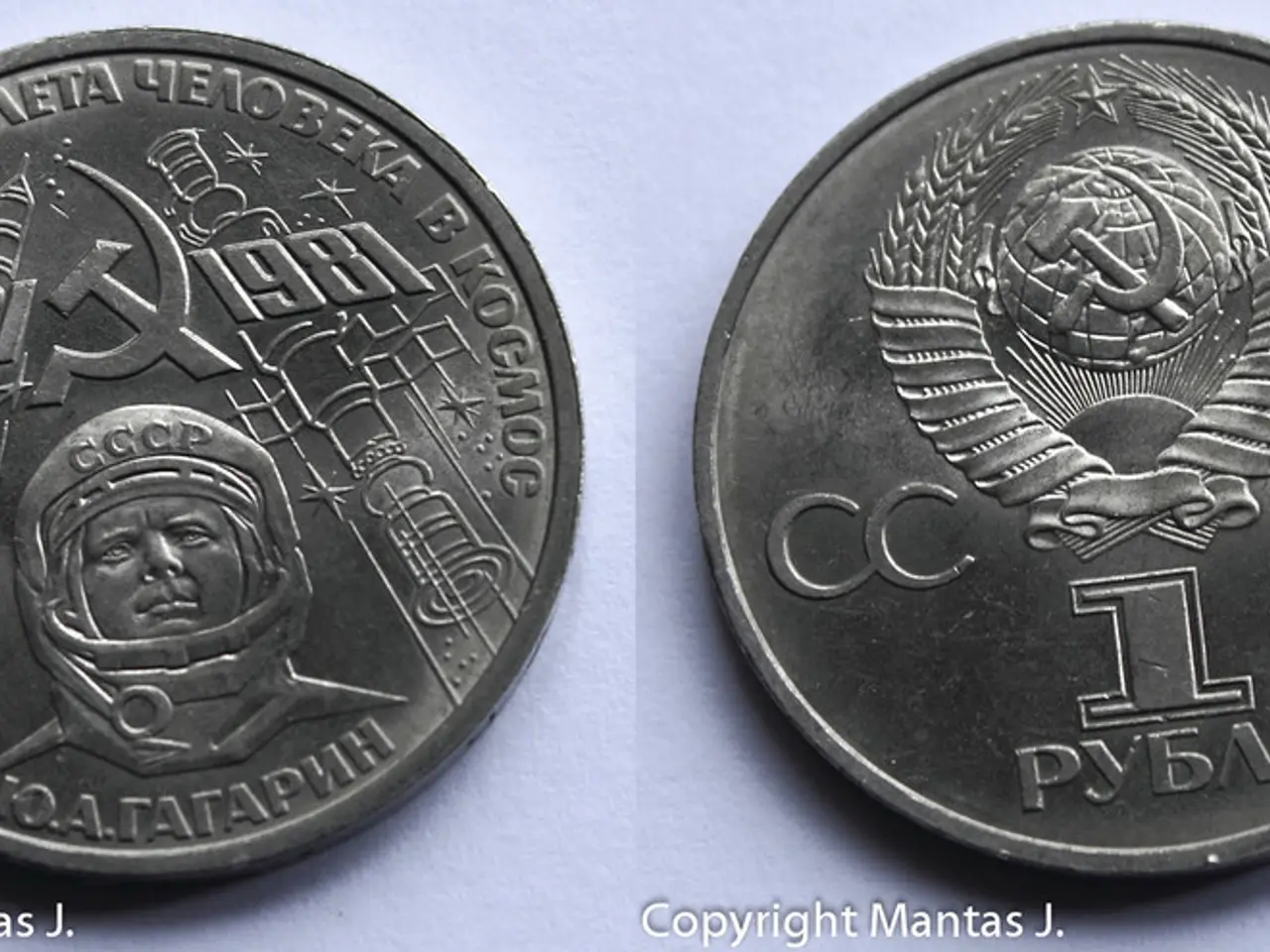Circle, the company specializing in stablecoins, ventures into Initial Public Offering (IPO) with an estimated valuation of $5.4 billion.
In a significant move for the stablecoin industry, Circle, the issuer of the popular USDC stablecoin, made its debut on the New York Stock Exchange (NYSE) in mid-2025, trading under the ticker symbol CRCL. The IPO aimed to raise $250 million, with an option for underwriters to purchase additional shares worth almost $94 million to cover overallotments [1][2].
The IPO was met with strong investor confidence, as Circle's stock price surged by 168% on its first day, closing at $80 per share [1][2]. Existing investors also planned to sell $374 million of stock in the IPO.
Circle's revenue model primarily relies on interest earned from reserve assets, mainly short-term U.S. Treasuries and government money market funds managed by BlackRock. In 2024, reserve income accounted for 99% of its total revenue, amounting to $1.66 billion [1][2].
The company is not just focusing on USDC as a trading token but is positioning it as a broader settlement and payment layer for the digital economy. Use cases include merchant payments, treasury management, cross-border remittances, and real-world asset tokenization. However, currently, about 67% of stablecoin usage is still tied to capital markets activities such as crypto trading and arbitrage [1].
Circle's emphasis on regulatory compliance, transparency of reserves, and expanding USDC’s utility in payments and asset tokenization differentiates it from Tether, the dominant stablecoin largely focused on trading liquidity and less on full transparency or diversified real-world utility [1][2].
The stablecoin market is expected to evolve from primarily speculative trading towards broader financial infrastructure uses, where Circle aims to lead. This evolution is further highlighted by the emergence of new stablecoin issuers such as the Trump-linked World Liberty Financial's USD1 stablecoin and Stripe's subsidiary Bridge's USDB stablecoin [1].
The US is on the verge of approving the GENIUS Act stablecoin legislation, which may favor Circle over its main competitor Tether [1]. JP Morgan, Citigroup, and Goldman Sachs are joint lead managers for Circle's IPO [1].
Circle also plans to launch the Circle Payment Network to streamline cross-border payments and has partnered with several major banks such as Deutsche Bank, Santander, Societe Generale, and Standard Chartered [1]. Stripe has unveiled stablecoin financial accounts for small businesses [1].
Interestingly, Coinbase was rumored to be interested in acquiring Circle, which could have been a more attractive option for the stablecoin firm. However, the acquisition did not materialise [1]. Ripple reportedly made a bid for Circle of around $5 billion, but the offer was rejected [1].
The stablecoin market is becoming increasingly competitive, with banks also reportedly exploring the issuance of a joint stablecoin [1]. The market capitalization of USDC has grown 73% since the US election, compared to Tether's 27%, although USDC had a smaller starting base. In absolute terms, Circle has grown $26 billion to $61.5 billion since the election, while Tether has grown $32 billion to $152.5 billion [1].
The IPO faced uncertainty due to President Trump's tariffs announcement, causing market volatility that made some believe the IPO window temporarily closed [1]. Despite these challenges, Circle's IPO is a landmark event for the stablecoin space, boosting its capital and visibility as it competes with Tether and others not only through scale but by offering a more regulated, versatile, and business-integrated stablecoin ecosystem.
[1] The Wall Street Journal, "Circle's IPO Highlights a Shift in Stablecoin Market," [date of publication not specified] [2] CoinDesk, "Circle's IPO: A Boost for the Stablecoin Market," [date of publication not specified]
- The successful IPO of Circle, the issuer of USDC stablecoins, trading under the ticker symbol CRCL, raised $250 million, demonstrating strong capital inflow into the stablecoin industry.
- As per the analysis and insights provided by finance and technology news sources, Circle's revenue primarily comes from interest earned on reserve assets, with 99% of its total revenue being reserve income in 2024.
- Despite competition from other stablecoin issuers like Tether and new entrants such as the Trump-linked World Liberty Financial's USD1 stablecoin and Stripe's USDB stablecoin, Circle remains focused on expanding USDC’s utility in payments, asset tokenization, and broader financial infrastructure uses.
- The company's emphasis on regulatory compliance, transparency, and diversified real-world utility positions it favorably in the competitive stablecoin market, as more banks reportedly explore the issuance of joint stablecoins.




